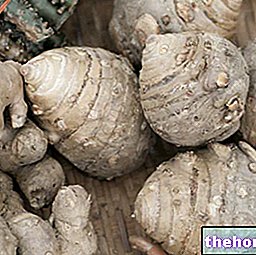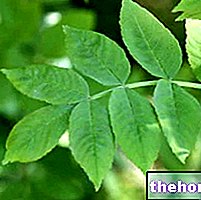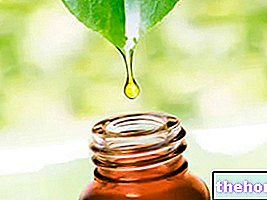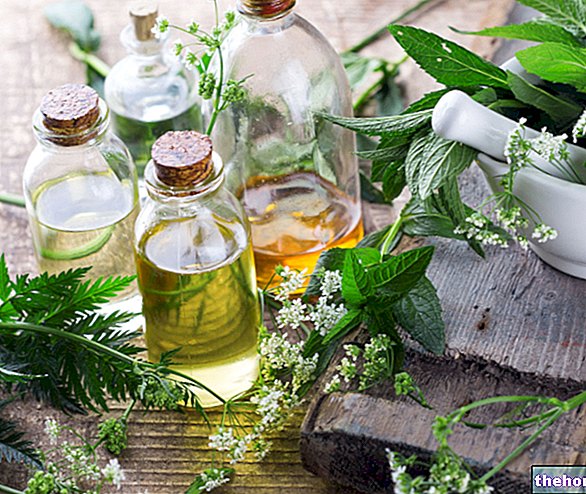
Contrary to what many think, the fact that essential oils are of natural origin does not necessarily imply that they are harmless products, without side effects and contraindications. On the contrary, like any other substance, even essences can give rise to undesirable effects and their use is not always indicated. For this reason, before resorting to the use of essential oils or any type of aromatherapy treatment, it would be advisable to consult your doctor.
PLEASE NOTE
The practices described here are not accepted by medical science, have not been subjected to sufficient experimental tests conducted with a scientific method or have not passed them. Such practices, therefore, could be ineffective or even dangerous to health. The information given here is for illustrative purposes only.
Alternative treatments cannot be understood as a substitute for traditional medicine.
For any doubts and for the treatment of any type of ailment or disease, it is necessary to consult your doctor before undergoing alternative treatments such as aromatherapy.
% natural. In fact, there are numerous synthetic essences on the market that mimic the organoleptic characteristics of natural essences but which may not have the same properties or even be harmful. In this regard, remember that it is not so unusual for pure essential oils to be sophisticated with synthetic essences. This type of fraud is very common, for this reason it is advisable to contact only and exclusively serious and trusted manufacturers and retailers.
To understand whether an essence is pure and natural or synthetic, in some cases it may be useful to evaluate the price of the product you intend to purchase: for example, 1 kg of synthetic rose essence costs 10 euros wholesale; while 1 kg of essential oil of Damask rose costs, according to its origin, from 5,000 to 10,000 euros. However, it should be noted that the price difference is not always so clear and clear; but, in principle and in proportion, the synthetic essences cost much less than the natural ones obtained entirely from the plant.
In addition to making sure that you have purchased a pure essential oil, it is necessary to know that essences are extremely concentrated substances that could be - in a more or less accentuated way, depending on the case - irritating to the skin and mucous membranes. Therefore, before using them in any way, they should always be diluted.
For more information: How To Use Essential OilsAt the same time, it is essential to be aware of the fact that essential oils have a certain allergenic power. For this reason, before using them, it is good to do a preventive test on a small portion of the skin, applying one or two drops of the product to check for the possible onset of allergic reactions.
Warnings and Precautions for the use of essential oils orally
Particular attention should also be paid to the internal use of essential oils. The oral intake of similar products, in fact, should be carried out only after consulting your doctor, even more so if you suffer from ailments or diseases, you are in particular conditions (for example, pregnancy or breastfeeding) and / or undergoing drug therapies. In fact, in addition to being able to cause irritation and / or allergic reactions, essential oils taken orally could interfere with the action of drugs, worsen pre-existing diseases or be contraindicated in certain conditions or situations (for example, the oral intake of oils essentials is generally contraindicated during pregnancy and breastfeeding).
, we find:
- Allergic reactions in sensitive individuals;
- Irritation of skin and mucous membranes;
- Irritation of the gastrointestinal mucosa and / or digestive tract disorders (when taken by mouth).
In addition to this, essential oils can also give rise to phenomena of acute or chronic toxicity, depending on the method of use, the concentration and quantity of product used.
Acute and chronic toxicity
Generally, acute toxicity occurs when the essential oil, or the drug that contains it, has been taken in inadequate doses; or when the person who has taken the product is hypersensitive to the components of the essential oil. Chronic toxicity, on the other hand, can occur following a prolonged use of the essential oil or the drug that contains it.
Some types of essential oils, if administered in very high doses (10-20 ml) can cause the appearance of an acute even lethal poisoning, with symptoms that generally affect the neuromuscular system (spasms, convulsions, etc.) and some of the most important internal organs (liver, kidneys, lungs, etc.). Several constituents of essential oils have properties that require a controlled use in terms of concentration and quantity of product to be used:
- Phenols are more or less caustic and can cause phenomena of renal irritation and lesions to the mucous membranes of the digestive tract;
- Some ketones are characterized by a marked neurotropism and by their tendency to accumulate in the organism, because they are difficult to eliminate;
- Terpenes are irritating to the skin and mucous membranes;
- Some esters are narcotic in very high doses.
It is therefore clear how the use of essential oils should take place under the guidance of an expert and after consulting with your doctor.
Examples of poisoning symptoms
Below are some examples of poisoning symptoms and the main toxicological observations related to the most common essential oils:
- Essential oils of anise and fennel (anethole): at high doses they can cause muscle numbness, decrease in respiratory rate, analgesia with a sense of euphoria. Clonic seizures may also occur occasionally.
- Essential oil of wormwood (thujone): in high doses it can cause damage to the nervous system with the appearance of tremor and insensitivity. In addition, it has an abortive effect. Thujone is a convulsive agent.
- Bergamot essential oil (bergapten): it can be the cause of skin hyperpigmentation phenomena (melanosis).
- Camphor essential oil: it is a stimulant of the central nervous system; at high doses it can cause convulsions.
- Cedar essential oil: in high doses it is abortive.
- Chenopodium essential oil (ascaridol): can cause toxic effects on the heart, breath and central nervous system.
- Clove essential oil (eugenol): in high doses it is caustic to the mucous membranes.
- Guaiac essential oil: in high doses it can cause gastroenteritis and heavy menstruation.
- Mint essential oil (menthol): in high doses it is amazing.
- Nutmeg essential oil: in high doses (10-15 ml) it is amazing due to the presence of phenylpropenic compounds (myristicin) structurally analogous to mescaline.
- Parsley essential oil (apiol): in high doses it is toxic and abortive because it is very active on the uterine muscles.
- Rue essential oil (methylnonylketone): in high doses it can cause fatal poisoning; moreover, it is abortive.
- Essential oil of sage (thujone): in high doses it causes convulsions.
- Mustard essential oil: in high doses it is caustic and can lead to asphyxiation from suffocation. Its internal administration should be avoided.
The practices described here are not accepted by medical science, have not been subjected to experimental tests conducted with a scientific method or have not passed them. This information is for illustrative purposes only.
Select plant Fir Acacia Acerola Sorrel Yarrow Yarrow Yarrow Aconito Adatoda Garlic Agnocasto Agrimonia Alchemilla Alkekengi Aloe Altea Witch Hazel Ammi or Visnaga Pineapple Andrographis Anemone Pulsatilla Angelica Anise Star Anise Japanese Star Anise Bitter Orange Bitter Areca Arnica Harpagophytum Arpagophyte Artemisia Asteragus Basil Asparagus Asparagus Peruvian Asparagus Asparagus Asparagus Hawthorn Boldo Borage Shepherd's Purse Boswellia Bucco Butea superba Cocoa Coffee Cajeput Calamus Calamus Marigold Camedrio Chamomile Roman Chamomile Camphor Cinnamon Ceylon Maidenhair Capuchin Artichoke Cardamom Cardiac Thistle Asian Thistle Carvi Cascara Cassia Catecu Catha Cabbage Celandine Chicory Centaurea Cinnamon Cypress Celandine Chives Cypress Coca Cola Colchico Combreto Condurango Comfrey Coriander Cranberry Barberry American Chrysanthemum Cumin Turmeric Damiana Digital Dioscorea Drosera Dulcamara Dunalilella Echinacea Eder a Ephedra Elenio Eleutherococcus Helichrysum Evening primrose Horsetail Alfalfa Erica Euphrasia Erisimo Escolzia Eucalyptus Farfara Farfaraccio Calabar bean Fenugreek Fennel Phytolacca Frangola Ash Fumaria Japanese Mushrooms Galega Ganoderma lucidum Garcinia Cambogia Mulberry Gentian Broom Ginkgo Ginkgo Guipana Guipana Gynestra Ginkgo Hibelia Gymnasium Hibiscus Guarulp St. John's Wort Horse Chestnut Ispaghul Hyssop Jaborandi Kava kava Konjac Laminaria Cherry Laurel Lavender Lemongrass Lespedeza Lovage Icelandic Lichen Lemon Flax Lippia Licorice Lobelia Hops Maca Marjoram Maize Mallow Manna Marrubio Marrubio d "water Matè Melaleuca Meliloto American Lemon balm Myrtle Myrama Walnut Nutmeg Walnut vomica Olive tree Meadowsweet Ononide Opuntia Oregano Orthosiphon Nettle Poppy Papaya Parietaria Feverfew Passiflora Chilli Perilla Periwinkle Phyllanthus Plantain Picrorhiza Pilosella Pino Pisci dia Podofillo Polygala Grapefruit Parsley Psyllium Pueraria mirifica Butcher's broom Pygeum Quassia Oak Rhubarb Ratania Rauwolfia currant Castor bean Rhodiola Rosehip Rosemary Rue Willow Sarsaparilla Sage Elderberry Sassafras Sedum Ergot Senna Serenoa Repens Soybean Solidago Tansy Taraxus Tamarind Tamarind Tamarind Tamarind Tamarindo Ursina Valerian Vanilla Mullein Verbena Veronica Viburnum Vinca Pansy Mistletoe Vine Withania Yohimbe Saffron Ginger Pumpkin Select disease Juvenile Acne Rosacea Tinnitus Tinnitus Aerophagia Tendon Affections Afonia Aphthae Algias Functional Halitosis Breastfeeding Allergy Anemia Anguish Anxiety Arteriosclerosis Asthrosis Asthrosis Arthritis Arthritis Men Sex Woman Blepharitis and Conjunctivitis Eye bags Bronchitis Gallstones Kidney stones Salivary stones Baldness Androgenetic Candida Fragile hair Caries Headache Cellulitis Motion sickness Cystitis C limaterio Cholecystopathy High cholesterol Ulcerative colitis Colonoscopy Contusions Hematoma Convalescence Couperose Depression Dermatitis Diaper dermatitis Diabetes Diarrhea Erectile dysfunction Dyslipidemia Dysmenorrhea Dyspepsia Disturbances of vision Hemorrhoids Epistaxis Herethism Heart disease Fever Fibromyalgia Gastro-intestinal disease Flatulence Hypertension Fibromyalgia Gastrointomnia Jaundice Laryngitis Renal lithiasis Toothache Sore throat Thinness Menopause Meteorism Mononucleosis Alzheimer's disease Crohn's disease Nausea Vomiting Obesity Dark circles Onychomycosis Osteoporosis Dry skin Periarthritis Piorea Low pressure Prostatitis Psoriasis Colds Breast fissures Anal fissures Gastro-nasal rhinitis Senescence Premenstrual Syndrome Sinusitis Quit smoking Overweight Fatty liver Constipation Stomatitis Stress Cough Triglycerides high Ulcer Burns Nails Brittle flashes Heat Warts Dizziness Properties herbal Tanning Abortive adaptogenic Aphrodisiac bittering analgesic anesthetic anorectics analgesic antacid anti-allergic anti-asthmatic Antibiotic catarrh Anticellulitiche anticonvulsant Antidiaforetiche antidiarrheal edematous anthelmintic antiemetic Antiemorroidarie antiphlogistic Antiidrotiche Antinevrotiche Antioxidants antipyretic antirheumatic antiscorbutic Antiseptic antispasmodic anti-uric Aperitive Flavoring Astringent Balsamic Bechiche Capillarotrope Cardiotonic Carminative Cathartic Caustics Healing Cholagogues Choleretic Dyes Decongestants Deodorants Purifying Diaphoretic Cleansers Disinfectants Detoxifiers Thirst quenching Diuretics Exciting Emetics Emmenagogues Emollients Hemostatic Energies Hepatoprotectors Expectorants Eupepticus Moisturisers Galactosensitizers lanti Hypertensive Hypnotic Hypoglycemic Hypotensive Irritants Laxatives Soothing Narcotic Nerves Nutrients Odontalgic Pectoral Purgative Revulsive Remineralizing Refreshing Rubefacient Scialagoghe Sedative Soporifugas Sneezing Stomachic Stomatics Narcotic Vascular Tightenitis



























